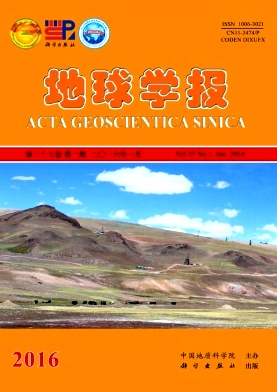CHEN Yong-fu, ZHANG Dong, LU Ying-chuan, LIU Peng, WANG Xiao-jun, FU Yang, LI Wen-liang, GUO Xiao-dong. Re-Os Dating of Molybenite from the Maoniugou Cu-Au Ore Deposit in the Northern Part of the Ngola Mountain, Qinghai Province, and Its Geological Significance[J]. Acta Geoscientica Sinica, 2016, (1): 69-78. doi: 10.3975/cagsb.2016.01.07
| Citation: |
CHEN Yong-fu, ZHANG Dong, LU Ying-chuan, LIU Peng, WANG Xiao-jun, FU Yang, LI Wen-liang, GUO Xiao-dong. Re-Os Dating of Molybenite from the Maoniugou Cu-Au Ore Deposit in the Northern Part of the Ngola Mountain, Qinghai Province, and Its Geological Significance[J]. Acta Geoscientica Sinica, 2016, (1): 69-78. doi: 10.3975/cagsb.2016.01.07
|
Re-Os Dating of Molybenite from the Maoniugou Cu-Au Ore Deposit in the Northern Part of the Ngola Mountain, Qinghai Province, and Its Geological Significance
-
Abstract
The Ngola Mountain lies at the conjunction between West Qinling and East Kunlun in the west of Central Orogenic Belt. Owing to its low research level, some problems concerned, such as the regional metallogenesis, geological setting and geodynamic process in Indosinian period, remain unclear. In this study, the authors used the method of temporal and spatial distribution characteristics of specific type deposits to deduce the geological background and geodynamic process. Based on a detailed study of geological features and ore-forming geochronology of the Maoniugou copper-gold deposit in northern Ngola Mountain, and combined with the traditional tectonic study and diagenetic evidence, the authors tried to explore the regional ore-forming geological background, the geodynamic process and the assignment of the Ngola Mountain through a comparison with the typical porphyry-skarn deposits in East Kunlun. The results show that the Maoniugou deposit is a small copper-gold skarn deposit closely related to Muleer granodiorite. Mineralizations associated with Cu-Au mineralization are mainly silicification, sericitization, chalcopyritization and pyritization. Ore minerals are mainly composed of chalcopyrite, pyrite and molybdenite. The authors measured Re-Os isotopes of representative molybdenite-bearing samples from the main orebody, and the six yielded model ages range from (237±3.3) Ma to (240.7±3.3) Ma with a well-constrained weighted average model age of (238.7±1.4) Ma. Based on these new age data and ages of regional porphyry-skarn ore deposits, the authors have reached the conclusion that the Ngola Mountain and East Kunlun had similar post-subduction settings and geodynamic processes at least in middle and late Triassic, and they belonged to the continental margin settings with the north subduction of Buqing-Anymaqin Mountain. The East Kunlun Triassic mineralization may have two peak periods: Fe-Cu skarn mineralization at about 237 Ma and Cu-Au porphyry mineralization at about 222 Ma, related respectively to break-off of the subducted slab and lithospheric delamination after crustal thickening due to collision between continental plates in Triassic.
-

-
-
Access History







 DownLoad:
DownLoad: